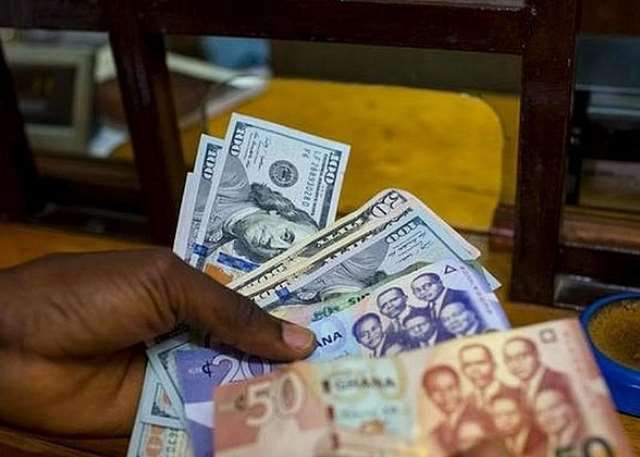The Ghanaian cedi experienced a notable depreciation against the US dollar on Tuesday, September 16, 2025, reflecting a concerning trend in the currency’s value. Across various exchange platforms, the cedi traded at weaker levels compared to the dollar, indicating a decreased purchasing power for individuals and businesses reliant on dollar transactions. This decline underscores the underlying economic pressures and market dynamics influencing the cedi’s performance. The data presented provides a snapshot of the currency exchange landscape on that particular day, offering insights into the prevailing rates and the disparities between different exchange avenues.
According to Cedirates.com, a reputable Ghanaian platform tracking currency and fuel rates, the average buying rate for the US dollar stood at GHS12.13, while the selling rate reached GHS12.69. Forex bureaus, which cater to individual currency exchange needs, quoted slightly higher rates, with the dollar buying rate at GHS13.15 and the selling rate at GHS13.50. This difference in rates between Cedirates.com’s average and forex bureau quotes highlights the markups typically applied by these exchange outlets. Meanwhile, at the Bank of Ghana’s interbank market, where financial institutions conduct large-volume currency transactions, the buying rate was GHS12.19, and the selling rate was GHS12.21. The relatively narrower spread between buying and selling rates in the interbank market reflects the wholesale nature of these transactions.
Beyond the US dollar, the cedi’s performance against other major currencies also revealed a pattern of depreciation. Against the British pound, the average forex bureau rates were GHS16.35 for buying and GHS17.18 for selling. The Bank of Ghana’s interbank rate for the pound was slightly lower at GHS16.60. Similarly, the euro traded at GHS14.17 for buying and GHS14.87 for selling at forex bureaus, while the interbank rate was GHS14.36. These figures demonstrate the interconnectedness of global currency markets and the influence of broader economic factors on exchange rates.
Money transfer operators, specializing in remittances, offered competitive rates for individuals sending money to Ghana from abroad. LemFi provided a dollar rate of GHS12.25, while Afriex offered a slightly more favorable rate of GHS11.99 for remittances from the US or UK. For pound remittances, LemFi offered a rate of GHS16.58, and Afriex quoted GHS16.49. Similarly, for euro remittances, Afriex quoted GHS14.32, and LemFi offered GHS14.36. These competitive rates in the remittance market reflect the significance of this sector in facilitating cross-border financial flows and catering to the needs of the diaspora community.
For digital subscriptions to services like Netflix, Spotify, and Apple Music using Visa or Mastercard, the exchange rate was GHS13.11. This specific rate applies to transactions processed through these payment platforms and represents a standardized rate irrespective of the currency of the original subscription. The consistent application of this rate simplifies the payment process for users and provides transparency in cross-border digital transactions.
In summary, the Ghanaian cedi’s depreciation against major currencies on September 16, 2025, reflected broader economic trends and market forces impacting its value. The varying exchange rates across different platforms, from forex bureaus to interbank markets and money transfer operators, highlight the complexities of the currency exchange landscape. Understanding these rate variations empowers individuals and businesses to make informed decisions about their foreign exchange transactions and navigate the fluctuating currency market effectively. The data provides a valuable snapshot of the cedi’s performance on that specific day, offering insights into the interplay of supply and demand, market sentiment, and broader economic factors influencing exchange rates.


